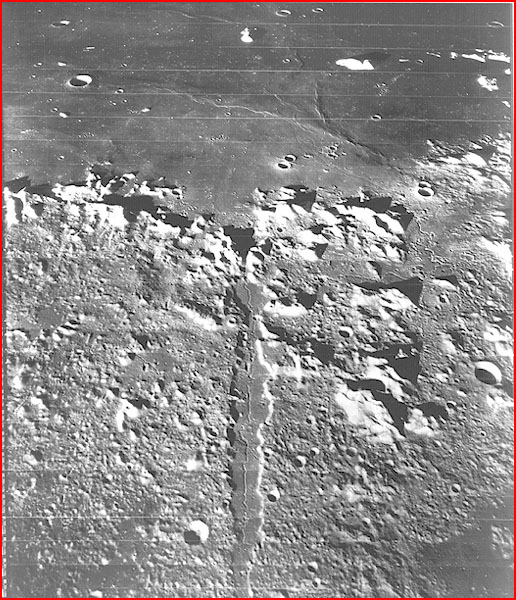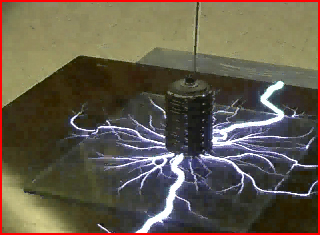|
|
||
 Credit: NASA/JPL, Alpine Valley from Lunar Orbiter 5
|
||
|
pic of the day Links:
Society for
|
Sep 01, 2004 The cracks in the Moon are called rilles. Some scientists first thought they were erosion channels left by flowing water because they are similar to channels on Earth that most people think were eroded by flowing water because water still flows in them and what else could it be. This chain of post-hoc-ergo-propter-hoc thought was broken by the discovery that there is not now nor likely has ever been water on the Moon. Some other scientists forged a second chain of thought that the cracks were lava tubes whose roofs had collapsed because some of them extended from craters that those scientists at the time thought were volcanoes. Later scientists became convinced that the craters were holes gouged in the lunar surface by impacts of asteroids and meteoroids. The impact of this new belief failed to break this second chain of thought because although it left the hypothesized tubes whose roofs had supposedly subsequently collapsed without a source of lava to form them what else could the cracks be. Now some scientists are forging a third chain of thought that the cracks are truly cracks, that the surface has fallen between parallel faults because a dike of lava pushed up beneath the crack, pushed up the entire region along the crack and caused the region to crack, which let the sliver of surface between the sides of the crack fall. They claim to have found proof of this rising and cracking and falling in the discovery of anomalous magnetism along some of the cracks because what else could the anomalous magnetism be. Some scientists are, as all scientists should be, skeptical of this. Empirical proofs prove nothing because they only prove that the effect being considered could result from the cause being alleged but they don't prove that there might not be something else it could be, although falsifications are final. The skeptical will look for the falsifications and the adventurous will look for bold new conjectures to answer the question "what else could it be" but only a few of these adventurous scientists will follow that question all the way back to the first thought and wonder if those channels on Earth, the ones with water still flowing in them, might also be susceptible to bold new conjectures. The falsifications of the several chains of thought are many and lie to hand: The rilles have no outflow, no fan of debris from water erosion, no lobes of lava from eruptions. They have no detritus inside from a collapsed lava roof. They have no constant cross-sectional area, deep where narrow and shallow where broad, as have channels left by flowing liquids; but their cross-sectional areas are the contrary, having constant width with varying depth. They have no constant downslope direction but they sometimes run upslope as well. They often have a more sinuous channel running along their centers, and this more sinuous channel may degenerate into a chain of craters. They may have levees of material pinched up along their edges. They may stop abruptly and begin again some distance away. They may have glassified floors. They seldom have tributaries, or never have tributaries commensurate with their sizes.
One bold what-else-could-it-be conjecture is that
they are channels carved by surface interplanetary plasma discharges |
|
|
Copyright 2004: thunderbolts.info |
||

